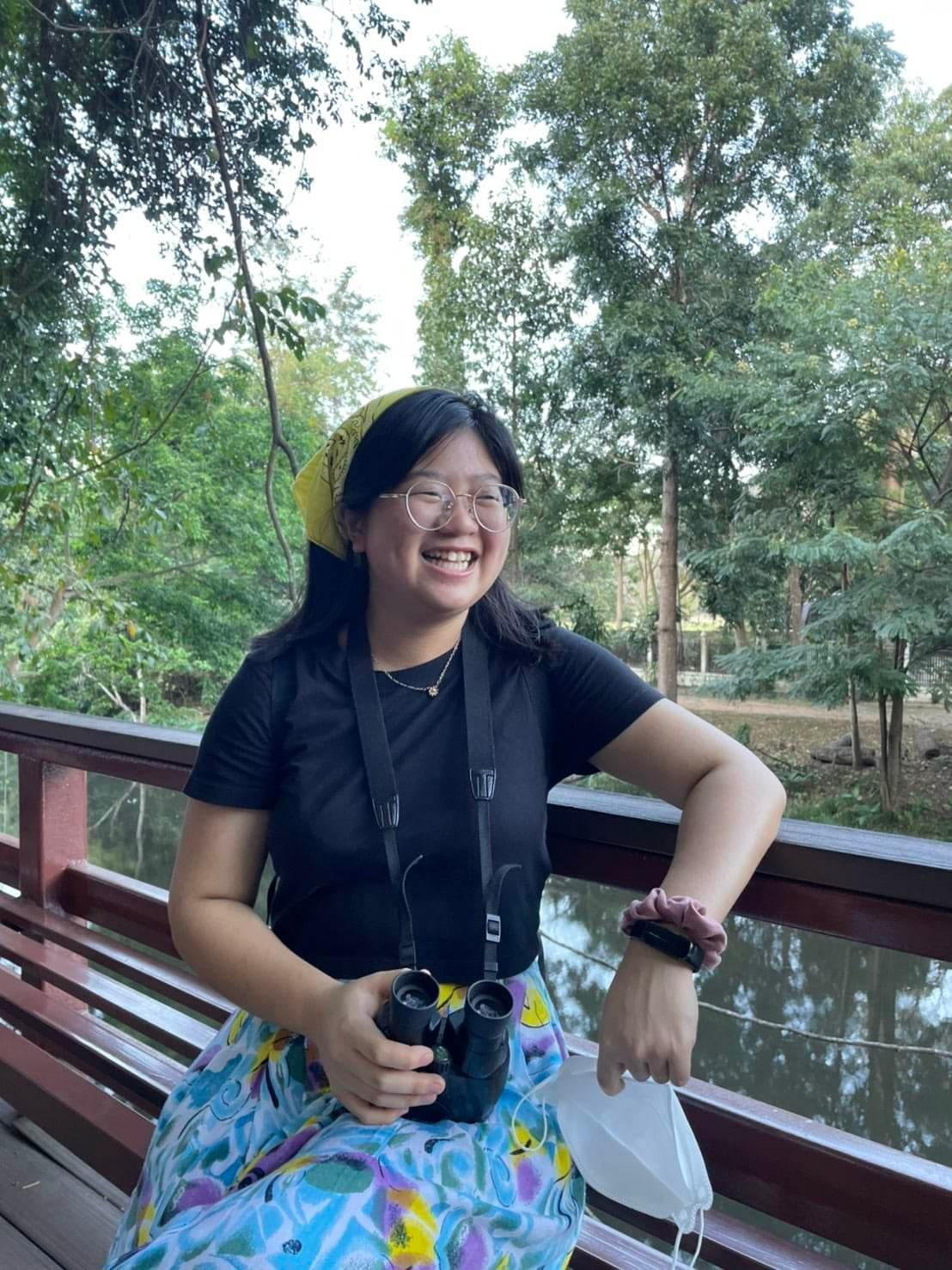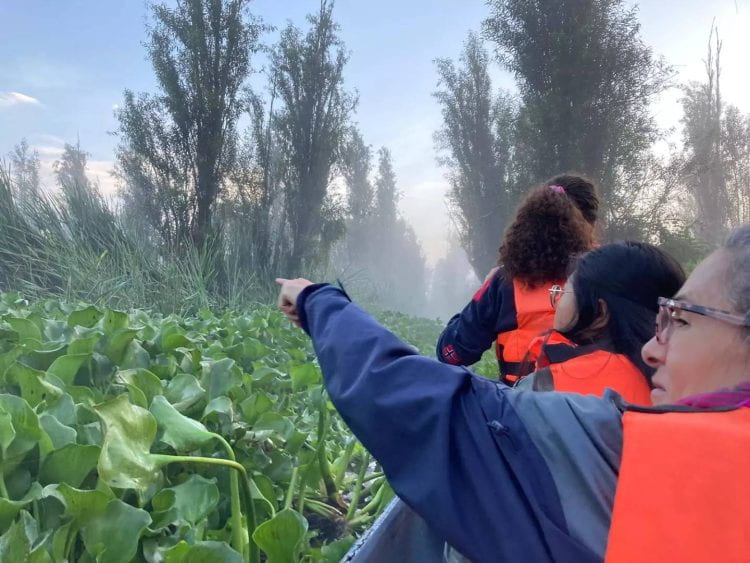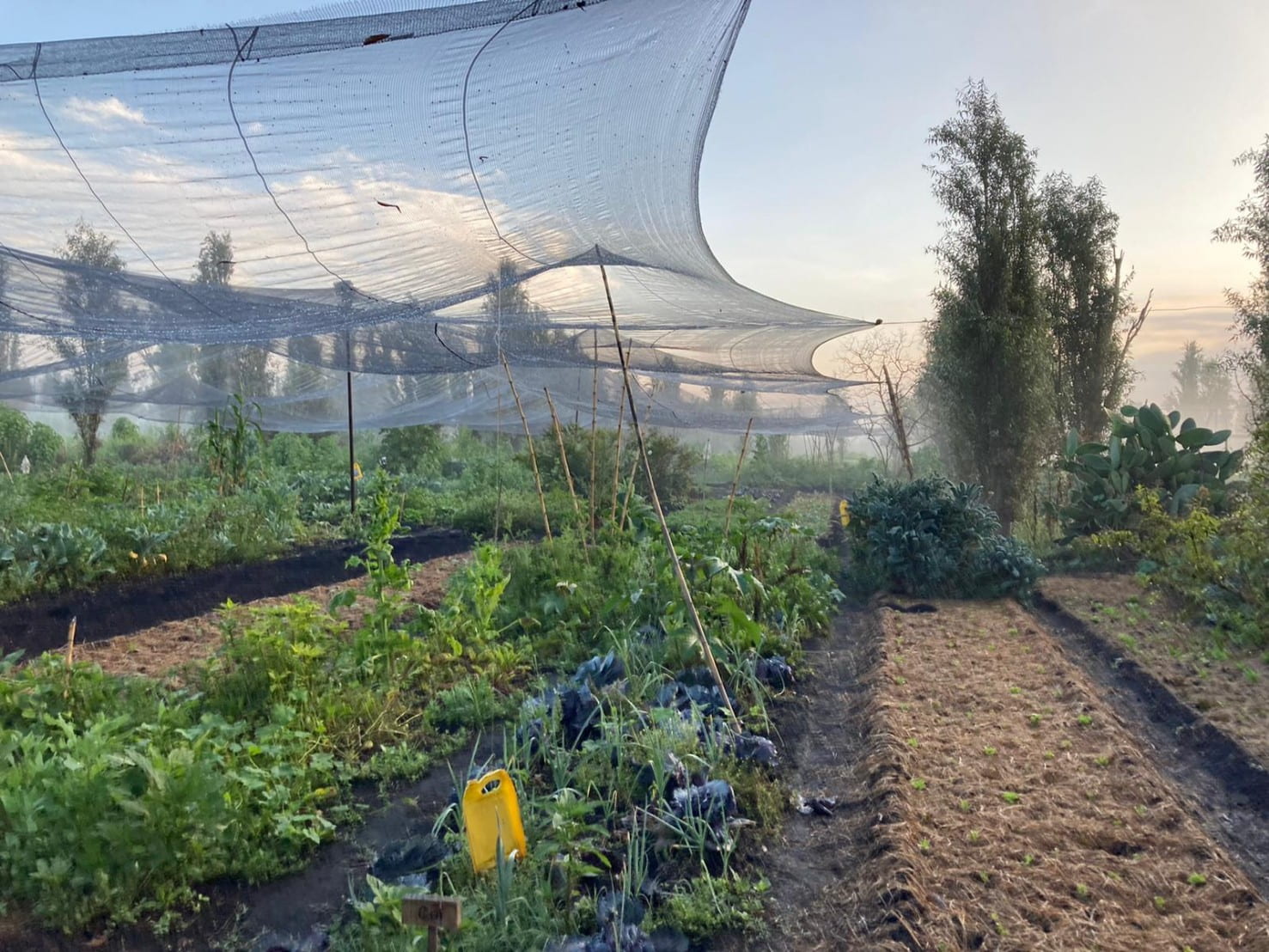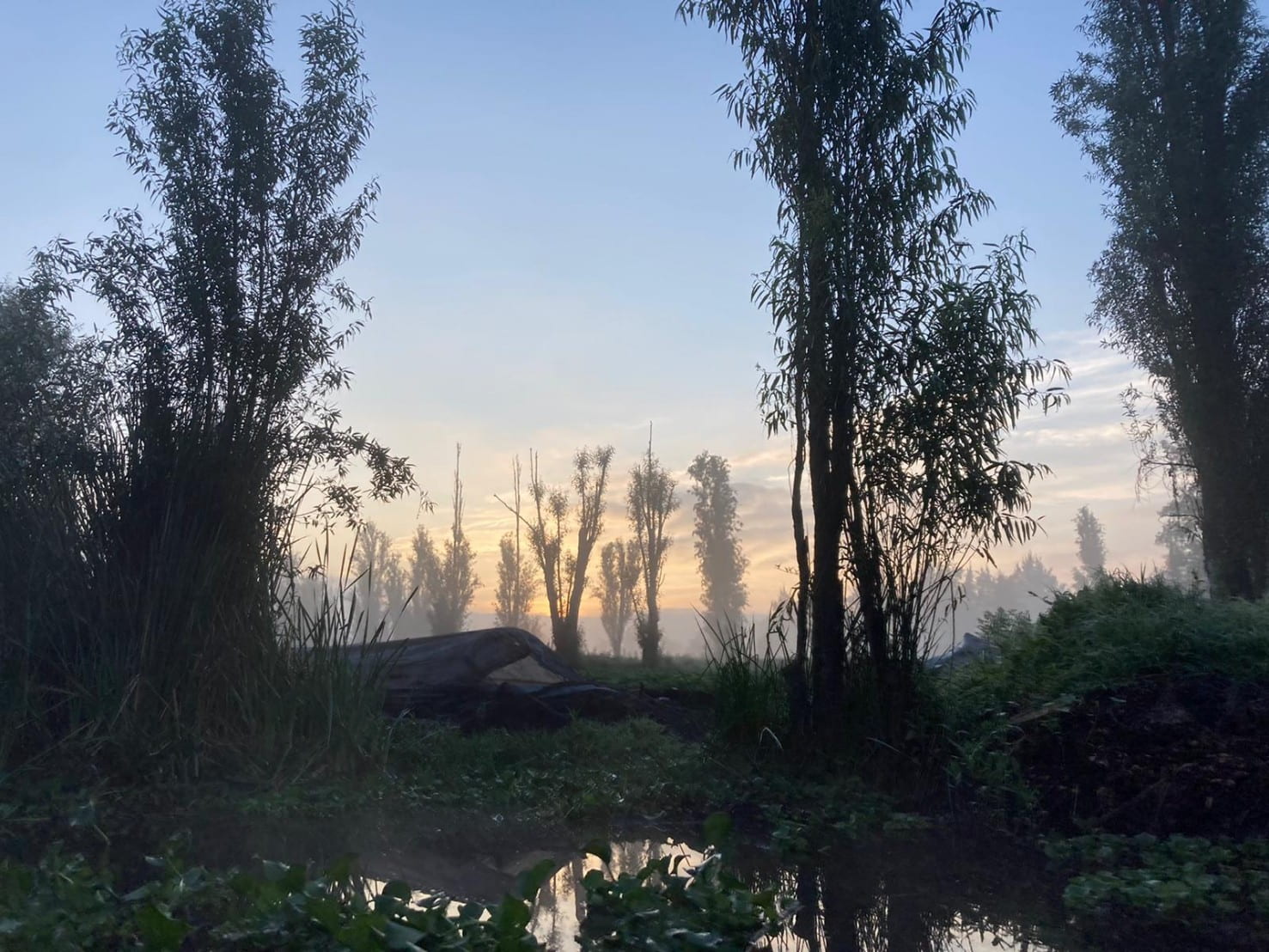How educators can inspire lifelong environmentalism through a social lens
 By Destiny Bunprakong (community-oriented advocate and future international educator)
By Destiny Bunprakong (community-oriented advocate and future international educator)
Photographs by Rianne N. Havik
In the summer of 2022 I was fortunate to spend time in Mexico City, where one July morning, we found ourselves headed towards the borough of Xochimilco. While the sky was still the deep blue of dawn, we carried a pair of canoes down to the canalside and, one-by-one, stepped into the swaying vessels. When we set off, the sky was the deep blue of dawn. Against the backdrop of overgrown greenery and waterside constructions, distant rumbles of an awakening city could be heard. The swooping call of water birds occasionally rang out between the swoosh of paddles against the murky water. Mist settled around us and the sun began to rise, creating a hazy, mythical scene.
After wrangling the vined plants that skimmed the water, we arrived. Our destination was a floating plot of land known as a ‘chinampa’. Constructed thousands of years ago by the Aztecs (Britannica, 2007), the extremely fertile land is the site of a social-environmental project. It is a continuation of the historical tradition as these plots used to feed the entire city. The Earth provides seasonal vegetables, grown by locals who are paid fair wages. The project, known as ‘Chinampas en Movimiento’ is financially supported by sales of their harvests and tourists who take a journey similar to ours.
When I think back to that summer, our morning along the canals sticks out as a beacon of hope. The project was born out of care for the planet, but it was our interactions that have an impact beyond a neighbourhood in Mexico City. We took home an emotional reminder of how truly connected our ancestors were, and we are, to the Earth. In line with the principles of Imaginative Ecological Education (IEE), I believe our trip is a window into how educators can deeply engage their students in taking care of the planet.
Feeling: The peace and stillness of a sunrise inspires awe, and was contrasted vividly by the frustration of wrestling water vines with our paddles and the rewarding soreness of my arms.
Activeness: This externally manifests in the action of paddling through the foggy canals. The internal connection arrived later, by feeling the damp earth nestling the seedlings in our hands. It was a glimpse into the future, of a bountiful harvest we would never get to see but were intangibly a part of.
Place/Sense of Place: Our entire experience was deeply grounded to the physical plot of land, but our relationship with the chinampa stretches beyond that. Local tradition and history provide a beautiful roadmap for present-day sustainability.
The Last Straw
In one of my interviews for this blog, I interviewed Paulina Cordova, a student at Universidad Anáhuac in Mexico City. She studies social responsibility and sustainable development and is one of the co-founders of Cycloop – a social enterprise developing logistics that will hopefully bring reusable containers to the food delivery apps of Latin America. She offers a wider perspective on the external social factors of environmental action.
She gives this anecdote:
“Maybe you avoid using a straw. Maybe that straw doesn’t make a difference to the world, but someone next you might be like ‘Why aren’t you using a straw?’ And it’s like ‘wow’ and you explain. Something has changed in that person, maybe. The individual to the global change for me, it’s more like that. Mentality changes with actions. Sometimes those actions might not be so relevant, but they have an impact because you are transmitting it to other people.”
It turns out, there’s a lot more nuance to what Cordova explained in our 15 minutes together. You’ve probably dealt with a damp, dissolving paper straw before – an outcome of the global movement against plastic straws that started on the Pacific island nation of Vanuatu in 2018 (Secretariat of the Pacific Regional Environmental Programme, 2018). That frustrating beverage experience is the start of a story – imagining a world without single use plastic.
It has led to a rush in social conversation about saving the turtles and whether what we’re doing for the environment is enough. Despite it being a step in the right direction with the involvement of national policies, National Geographic reports that plastic straws make up only 0.025% of the 8 million tonnes of plastic that end up in our oceans every year (National Geographic, 2019).
More importantly, the straw-ban is what the director of Stanford Center for Ocean Solutions Jim Leape calls a ‘moral licence’ – we get to feel like we’ve done something for the environment without having to make drastic lifestyle changes. Even then, the change is drastic to people with disabilities who rely on the flexible and sanitary, disposable nature of plastic straws.
What Kind of Citizen?
When educators choose to take a critical look at the environmentalism they promote in the classroom, they can differentiate using Joel Westheimer’s vision of global citizenship. Avoiding a straw is an appeal to personally responsible citizens, whose actions are based on ‘good character’ and voluntarism. He divulges on how actions like these focus on private kindnesses that “fail to examine the deeper structural causes of social ills”(Westheimer, 2017).
I hope to uncover more of Westheimer’s critical, social justice citizenship. Educators can support students by recognising that environmentalism has deep roots in emancipation and justice. Britannica references the Chipko movement in India, which linked forest protection with the rights of women, and the Assembly of the Poor in Thailand, a “coalition of movements fighting for the right to participate in environmental and development policies” (Britannica).
As Cordova so vividly stated, “environmental problems are social problems”. She saw those living in poverty collecting plastic and glass to sell, and knew there was some relationship between our consumption, the welfare of others and the state of our planet. By creating learning opportunities based on local scenarios, students can cultivate a sense of Place as they develop empathy for the nuanced social impacts of environmental issues.
Time in nature may be limited, but with imagination there is always a way to affectively engage young environmentalists. When we value our students as active participants and meaning makers, caring for our planet becomes something we can, as Dr. Judson says, “weave into our hearts together” .
References
Dietz, T., Fitzgerald, A., & Shwom, R. (2005). Environmental values. Annual Review of
Environment and Resources, 30, 335–372.
Britannica (n.d.), environmentalism – History of the environmental movement. EncyclopediaBritannica. Retrieved 30 September 2022, from
https://www.britannica.com/topic/environmentalism/History-of-the-environmental-movement.
EU restrictions on certain single-use plastics. European Commission. (2021). Retrieved 1
October 2022, from
https://environment.ec.europa.eu/topics/plastics/single-use-plastics/eu-restrictions-certain-si
ngle-use-plastics_en.
Gayatri, S. (2022, October 10). The return of Aztec Floating Farms. BBC Travel. Retrieved
March 17, 2023, from
https://www.bbc.com/travel/article/20221009-the-return-of-aztec-floating-farms
Gibbens, S. (2019). Plastic straw bans are spreading: here’s how they took over the world.
National Geographic. Retrieved 1 October 2022, from
https://www.nationalgeographic.com/environment/article/news-plastic-drinking-straw-history-
ban.
Judson, G. (2016). The Principles of Imaginative Ecological Education (IEE) (Speaker:
Gillian Judson). Retrieved from https://www.youtube.com/watch?v=bFOBqHd5UqY&t=20s.
Jordan, R. (2018). Do plastic straws really make a difference?. Stanford Earth. Retrieved 1
October 2022, from
https://earth.stanford.edu/news/do-plastic-straws-really-make-difference#gs.di7ah2.
Rationale – IEE. Ierg.ca. Retrieved 5 October 2022, from http://ierg.ca/IEE/rationale/.
Walking the talk in Vanuatu, the first country in the world to ban plastic straws | Pacific
Environment. Sprep.org. (2018). Retrieved 1 October 2022, from
https://www.sprep.org/news/walking-talk-vanuatu-first-country-world-ban-plastic-straws.
Westheimer, J. (2017). What Kind of Citizen? (1st ed.). Teachers College Press.
Xochimilco | district, Mexico City, Mexico. Encyclopedia Britannica. (2000). Retrieved 1
October 2022, from https://www.britannica.com/place/Xochimilco.
Young, J. C., Carsten Conner, L. D., & Pettit, E. (2020). ‘you really see it’: Environmental
identity shifts through interacting with a climate change-impacted Glacier Landscape.
International Journal of Science Education, 42(18).




A fantastic, inspiring blog!